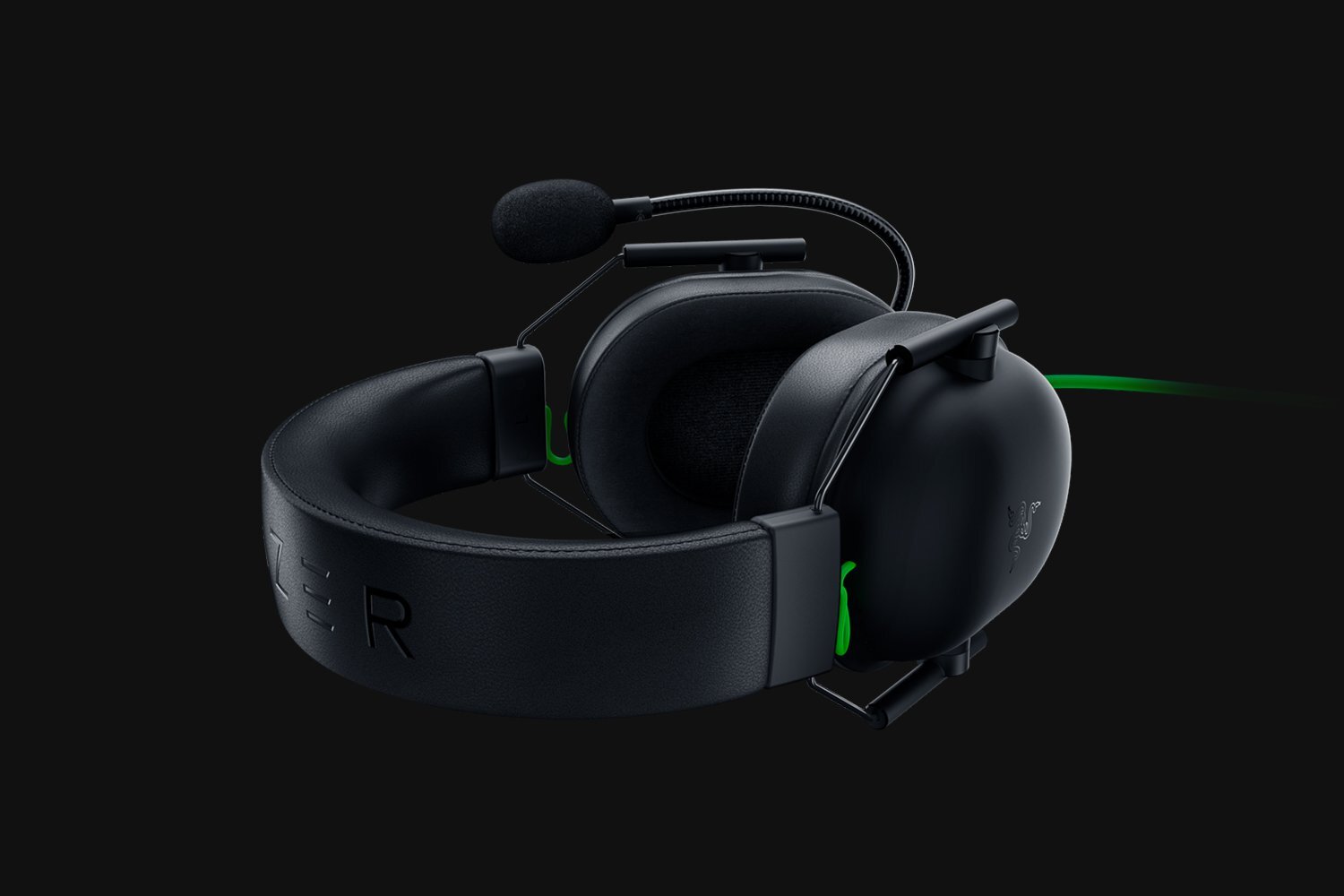Razer Blackshark V2 X Impressions
This is an impressions piece rather than a review because I was only able to spend two days with this headset before needing to arrange a return, due to two small defects that I don’t think are widespread issues whatsoever. My volume pot had a scratchy imbalance near the top of the adjustment range, and my attached cable was completely loose and wiggling inside the housing. I haven’t seen any significant reports of build issues with this headset, so I probably just received a rare faulty unit from Amazon.
With those small negatives out of the way, it’s time to gush for a bit. The Blackshark V2 X is Razer’s new budget “esports-style” gaming headset, and it sells for $59.99. It’s a closed-back wired headset with a permanently attached cable and microphone, and in the box you also get a cloth carrying bag(!) and a redeemable code for Razer’s basic surround software. It’s the cheapest gaming headset I’ve ever seen come with its own carrying bag, which is a great touch. There’s a more expensive version available as well, the Blackshark V2 (no X), which sells for $99. It comes with sports mesh ear pads and headband padding, a detachable microphone, and a USB sound card dongle that includes THX Spatial Audio. This is a new version of the THX virtualization system that has some automatic activation options and profiles, solving one of my complaints about the older version.
The industrial design of the Blackshark reminds me of the venerable Plantronics GameCom Commander headset, a staple of esports tournaments that has only very rarely been sold direct-to-consumer, for whatever reason. The Blackshark feels like a result of a meeting at Razer where they said “why don’t we make that headset widely available and affordable?” The result is a nice, subtle aviation-esque design with a few hints of Razer green and almost none of the cheapness that sometimes pervades the less-than-$100 headset category. The ear cups on the V2 X are smartly free of glossy plastic. The adjustment slider arms are metal and have a good bit of friction in the frame. And the whole thing is devoid of any obvious failure points or bits that will develop creaking over time.
Official Razer Marketing shot, https://www.razer.com/gaming-headsets/razer-blackshark-v2/RZ04-03240100-R3U1
Comfort was also clearly a focus. The pads use a decent memory foam, and although they don’t have built-in glasses channels like the pads on the Kraken and the Nari, they still sealed over my glasses just fine. Sound comes courtesy of the new “Triforce” driver, a triple-chamber design that’s obviously a response to HyperX’s popular dual-chamber drivers. The sound quality is perhaps my favorite ever on a Razer headset. Although the bass has some of their characteristic aggression, the midrange and treble are perfectly smooth and natural, resulting in an a great balance of accuracy and low-end fun that I’m hoping is their new gaming sound signature going forward.
The mic performance is just as impressive as the sound and comfort, with a clear, clean, resonant pickup that’s also sensitive enough to use without too much gain. The boom arm is highly adjustable in spite of being permanently affixed to the headset, and the included windscreen foam filter is fluffier than average and effective.
Every time a new Razer product comes out, it gets hyped to the end of the world by influencers and Razer fans…and this headset was no exception upon its surprise launch last week. But this time, the hype is well-earned. This is a good-sounding, comfortable headset that gets all the fundamentals right and comes in at an affordable price point. The sound signature is a more refined and accurate version of the fun thump that has always defined Razer audio, and the comfort rivals HyperX’s excellent lineup. Like the Razer Opus before it, this is a very surprising product. It seems like Razer is now fully committed to delivering high quality audio alongside their fun industrial designs. I already enjoyed the Kraken X, Razer’s 2019 attempt at a solid budget gaming audio product, and the Blackshark V2 X bests it in just about every way.
In the next few weeks, I look forward to getting a non-X Blackshark V2 in here so I can test out its slightly larger pads and included sound card. Both of these models have a high probability of landing near the top of my “Best Headsets of 2020” list.






